The Witches
Reading time: 7 min
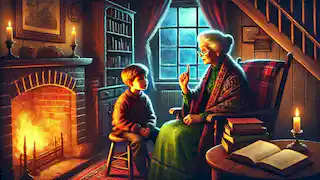
About this story: The Witches is a Fantasy from Norway set in the Contemporary This Simple tale explores themes of Courage and is suitable for Children. It offers Moral insights. A young boy and his grandmother take on the terrifying world of witches with a bold plan to save children from an evil fate.
The story begins with a simple yet ominous warning: witches are real, and they are far more terrifying than the ordinary kind of witches you might have read about in fairy tales. They don’t fly on broomsticks or wear pointy hats, but they are dangerous, cunning, and their sole mission is to rid the world of children. Roald Dahl crafts a world where witches walk among us, hiding their true selves behind perfectly normal human disguises, making it impossible to tell who is a witch and who is not.
My Grandmother’s Warning
I was only seven years old when my parents died in a car accident. They were traveling from Norway to England when their car skidded off the road, leaving me an orphan. My grandmother, who lived in Norway, took me in and raised me as her own. She was a strong, determined woman, but there was something unusual about her—something mysterious. My grandmother was an expert on witches.
From an early age, she warned me about the existence of witches. "Witches," she told me, "are not like ordinary women. They are monsters disguised as women. They loathe children, and their greatest joy in life is to make them disappear forever." I listened to her stories with wide eyes, hanging on every word, terrified and fascinated in equal measure.
"Witches can smell out children," she said one evening, her voice low and serious. "They have an extraordinary sense of smell, and to them, children smell like dog droppings." I wrinkled my nose in disgust. "But don’t worry, darling," she added with a smile. "There are ways to protect yourself."
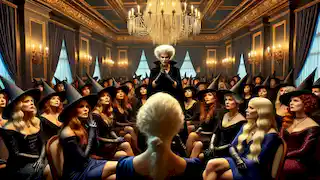
The Secret of the Witches
My grandmother's stories grew more and more detailed as I grew older. She told me about the physical signs that could help identify a witch. Witches, she explained, are always bald, which is why they wear wigs. But the wigs cause them to itch horribly, so if you see a woman scratching her head often, she might be a witch.
Witches also have no toes. Their feet are square, so they wear pointy shoes to hide this deformity. And they have claws instead of fingernails, which they disguise with gloves, even in the middle of summer. But the most terrifying feature of all was their eyes—witches have slightly larger pupils that change color, like fire.
“Never forget these signs,” my grandmother told me. "If you see a woman with any of these traits, run away as fast as you can."
I asked her how witches killed children. She leaned closer and whispered, "They don't kill them outright. That would be too easy. Witches prefer to change children into creatures—animals, insects—so that no one will ever know what happened to them. You could be playing with a mouse one day, and it might just be a child who was turned into a mouse by a witch."
Her stories sent shivers down my spine. Every woman I saw after that made me wonder if she might be a witch. Was the old lady at the grocery store scratching her head too often? Was the teacher in my school wearing gloves in summer? I couldn’t help but feel a constant sense of paranoia.
Moving to England
When I was about nine years old, my grandmother and I moved to England. She thought it would be a safer place for me. But even in England, she continued to warn me about witches. One day, while we were walking in the countryside, she stopped abruptly and pointed to a grand hotel in the distance.
"That place," she said, "is where the witches gather for their annual meetings. Every year, they meet in a different location to discuss new ways of getting rid of children. They might be planning their next move right there as we speak."
I laughed nervously, but I couldn't shake the feeling that she might be right.
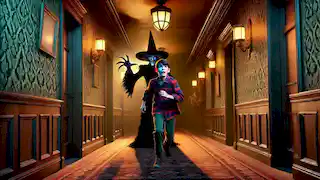
The Grand High Witch
It was during one of our trips to the countryside that I had my first encounter with a real witch. My grandmother and I were staying at the very same hotel she had pointed out before. It was a grand, old-fashioned place, and I loved exploring its many rooms and corridors.
One afternoon, while wandering around the hotel, I stumbled upon a large conference room. The door was slightly ajar, and curiosity got the better of me. I peeked inside and froze. There, gathered in the room, were dozens of women, all wearing wigs and gloves. They were chatting and laughing, but there was something unsettling about their appearance.
Suddenly, the room went quiet. A woman stepped onto the stage at the front of the room. She was short, with a fierce, commanding presence. As she removed her wig, I gasped. She was completely bald! This was the Grand High Witch, the most powerful and dangerous witch in the world.
I watched in horror as she gave a speech, instructing the witches on their new plan to rid the world of children. They had developed a formula that could turn children into mice. "Once we turn them into mice," she said, her voice cold and calculating, "they will be easy to dispose of."
I stood there, frozen with fear, realizing that my grandmother's stories were true. Witches were real, and I was in the presence of the most dangerous of them all.
The Plan
I ran back to our hotel room, breathless and terrified. I told my grandmother everything I had seen. She listened carefully, her face growing grimmer with each word.
"We have to stop them," she said firmly. "If they succeed, no child will be safe."
Together, we devised a plan. We would steal the formula and expose the witches' plan before they could put it into action. But it was dangerous. If the witches caught us, they would surely turn us into mice—or worse.
That night, we snuck into the conference room. The witches were still meeting, but they were distracted. My grandmother slipped into the room, grabbed the formula, and we made our escape.
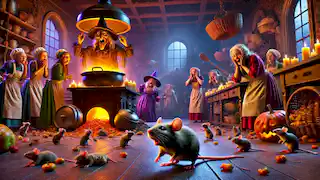
The Transformation
The next morning, we prepared to expose the witches. But something went wrong. As we were leaving our room, I bumped into one of the witches in the hallway. Before I could react, she grabbed me and forced a few drops of the formula into my mouth. I felt a strange sensation wash over me, and then everything went black.
When I woke up, I was no longer myself. I was a mouse.
I scurried back to my grandmother, who was horrified when she saw me. But she didn’t give up. "We will find a way to stop them," she promised.
Despite being a mouse, I was determined to help. We managed to sneak into the conference room one last time and slip the formula into the witches' food. One by one, they began to transform into mice, just as they had planned to do to the children of the world.
The Grand High Witch was the last to change. As she shrieked in fury, her body twisted and shrank until she was nothing more than a small, scurrying rodent.
The New Life
With the witches defeated, my grandmother and I returned to Norway. I was still a mouse, but we had stopped the witches' plan and saved countless children. My grandmother took care of me, and together, we lived a quiet, happy life.
But even though the witches were gone, my grandmother never stopped warning me to be vigilant. "There may be more out there," she said. "And we must always be ready."
I nodded, determined to stay alert. After all, you never know when you might cross paths with a witch.
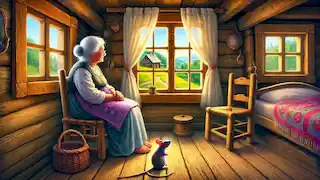
Conclusion
Roald Dahl’s "The Witches" is a gripping tale that explores the power of courage and the importance of being prepared for the unexpected. It reminds readers that danger can sometimes be hidden in the most ordinary places and that even the smallest among us can be heroes. Though the protagonist's life is forever changed, his bravery and his grandmother’s wisdom allow them to defeat a powerful force of evil. The story leaves a lasting impact, not just as a tale of witches, but as a reminder that evil can be defeated through cleverness and determination.


















